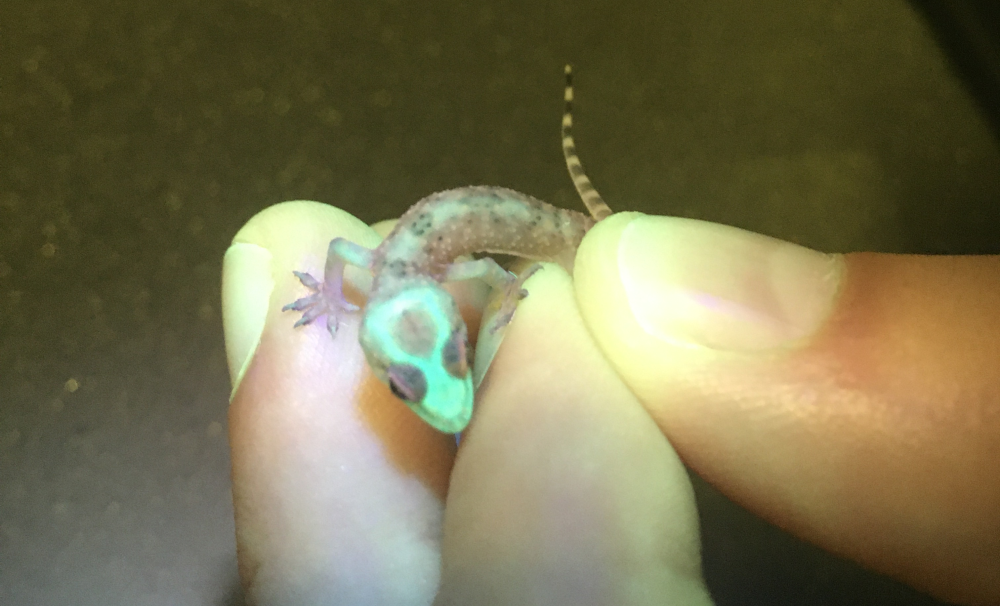Some animals have a curious way of emitting light that we humans can see when we shine a blacklight on them, a pastime that community science website Finding Fluorescence is no stranger to. They recently reported that they’d identified 15 new species that exhibit biofluorescence, providing new insights into its possible ecological functions.
When light hits some living things, it gets re-emitted at a longer wavelength in a trait that’s known as biofluorescence. It differs from bioluminescence, the glowing you see in dee-sea creatures that’s facilitated by enzymes. For biofluorescence, it all comes down to the right wavelength of incoming light hitting and exciting molecules known as fluorophores, which then re-emit light that’s seen as fluorescence. The “bio” bit simply refers to the fact it’s coming from a living thing.
We’ve already discovered biofluorescent animals from all sorts of life, including amphibians, eels, and platypuses. It’s a glowing and growing area of science, and one that Finding Fluorescence is keen to learn more about. However, if we’re going to track these biofluorescent animals down, the human eye needs a helping hand.
“As humans, we are only capable of seeing into the visible light range on the electromagnetic spectrum (typically between about 380 nm to 700 nm is what the human eye can detect), whereas other different types of organisms have a different range that they are able to detect,” said preprint author Hannah Burke, Florida State University Alum, to IFLScience. “For example, many pollinators, such as bees, can see into the ultraviolet portion of the electromagnetic spectrum, allowing them to see patterns and colorations on flowers that we as humans would be unable to see with the naked eye.”
“Biofluorescent emission wavelengths are specific depending on the organism and the ecological purpose of the biofluorescence. Humans use blacklights to see patterns of fluorescence that we would otherwise be unable to see. Blacklights are a shorter wavelength than visible light, and when absorbed into certain fluorescent substances, the light will then be re-emitted at a longer wavelength that humans are able to perceive as biofluorescence. So, in short, humans sometimes need a little help from blacklights to see what so many creatures around us are able to perceive all on their own!”
Biofluorescence was first thought to be a big thing among marine animals, but we’ve since realized that it happens on land, too, and could serve all kinds of functions in reproduction, camouflage, communication, and hunting. Finding Fluorescence has been trying to track them down since 2020, and in this new preprint paper, which has not been peer reviewed, presents at least 15 novel biofluorescence accounts from 15 different species.

The Mediterranean house gecko getting its glow on.
Image credit: Finding Fluorescence
“My personal favorite submission to Finding Fluorescence is that of the squirrel tree frog (Hyla squirella),” added Burke. “The frog was found to fluoresce along its lateral stripe, and another past study has found that females prefer to mate with males with a larger lateral stripe (Taylor et al., 2007).”
“I feel that this example explicitly points to one of the ways in which fluorescence may be impacting ecological interactions visually. Another favorite submission of mine is of a Mediterranean house gecko (Hemidactylus turcicus) which showed green fluorescence of the gecko’s skull and spine through its skin. It has been suggested that fluorescence in geckos can aid in intraspecific signaling or identification by accentuating certain aspects of the gecko, such as body markings or its skeletal elements.”
While these critters all share the eery glow of biofluorescence, it can vary in the placement across the animal, and the wavelength of light needed to excite the fluorophores. Working out the specifics can help us identify their possible ecological functions. Want to join in the fun? Head to Finding Fluorescence to find out how.
The preprint paper is hosted on bioRxiv.
Source Link: 15 Species That Glow Under UV Light Identified, And You Could Help Scientists Find More